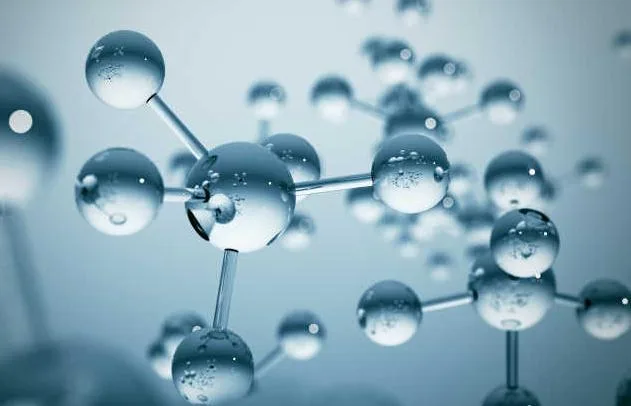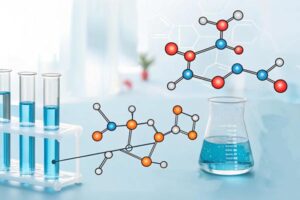What is crosslinking of waterborne polyurethane?
The molecular chain of waterborne polyurethane resin is generally linear or branched, and the strength of the film without crosslinking is lower. In order to improve the water resistance, chemical resistance, high temperature resistance and mechanical properties of the cured film, it is necessary to appropriately increase the degree of crosslinking during the synthesis of the resin, or insert some crosslinkable groups, or add some crosslinking. It can produce enough cross-linking during curing to form a film to form an interpenetrating network system or a polymerized cross-linking system to meet various requirements.

Crosslinking methods of waterborne polyurethane
The cross-linking modification of waterborne polyurethane can be divided into internal cross-linking and external cross-linking. It is a method of cross-linking linear molecular chains into a network structure through a chemical cross-linking modification method to improve the water resistance of the material.
Internal crosslinking modification
Internal crosslinking modification usually selects a trifunctional or higher alcohol instead of diol, or selects a trifunctional or higher isocyanate to replace part of the diisocyanate as raw materials to produce a certain degree of crosslinking and branching waterborne polyurethane.
External cross-linking modification
The external cross-linking method is equivalent to a two-component system, that is, adding the cross-linking agent component to the water-based polyurethane main agent before use. During the film formation or heating after the formation, a chemical reaction occurs to form a cross-linked film.
Compared with the internal cross-linking method, the obtained emulsion through external method has good performance. Besides, the performance of the film can be adjusted according to the variety and dosage of different cross-linking agents. The disadvantage is that it needs to be configured before use and has a limited pot life.
Commonly used cross-linking agent systems:
Polyisocyanate crosslinking agent/curing agent
There are two types of isocyanate crosslinkers used in waterborne polyurethanes, hydrophobic and hydrophilic.
Hydrophobic isocyanates such as HDI trimers, IDI trimers, and IPDI trimers are added to waterborne polyurethane and must be dispersed under high shear.
The hydrophilic modified aliphatic polyisocyanate is easier to disperse in water, and the polyisocyanate can be more uniformly dispersed by mechanical mixing. This water-dispersible polyisocyanate has become the main crosslinking agent of waterborne polyurethane and is used as the room temperature crosslinking component of two-component waterborne polyurethane coatings and adhesives.
Dispersible polyisocyanate crosslinking agent products are mainly aliphatic, because aliphatic polyisocyanates react very slowly with water, leaving active NCO to react with the hydroxyl groups in the film during the film formation process. These polyisocyanate crosslinkers are generally 100% non-volatile liquid polyisocyanate products, and a few are organic solutions of polyisocyanates, with solvents such as butyl acetate and dipropylene glycol dimethyl ether.
The general addition amount is 1%-5%, and the pot life is 4-6 hours. Adding too much will cause the film to be harder, and it needs to be sealed and stored.
Aziridine crosslinking agent/curing agent
The aziridine (aziridine) can react with carboxyl and hydroxyl groups at room temperature. Compounds with multiple aziridine rings are suitable as carboxylic acid type waterborne polyurethane crosslinkers, mainly to improve water resistance.
There are such products at home and abroad. It is added to waterborne polyurethane and mainly reacts with carboxyl groups. Generally, it should be used up within 24 hours. It can also self-polymerize under acidic conditions. The general dosage is 1%-4%.
However, aziridine compounds are toxic, have ammonia odor, and are expensive. It is relatively stable under alkaline conditions. Some people believe that adding aziridine to alkaline emulsions to form an internal cross-linking system can be cross-linked by controlling the pH of the emulsion.
Polycarbodiimide crosslinking agent/curing agent
Polycarbodiimide crosslinking agent is a light yellow transparent liquid, which can improve the adhesion to special substrates. Polycarbodiimide can be used as room temperature crosslinking of carboxylic acid type waterborne polyurethane, etc., and can exist stably in PU emulsion, and its crosslinking reaction is carried out by acid catalysis.
Due to the volatilization of water and neutralizer during the drying process of the coating film, the pH value in the film will decrease, which provides conditions for the occurrence of cross-linking reaction. The dosage is generally 5%-10%, and some are even less, and the pot life is about 12 hours.
Compared with aziridine cross-linking agent, polycarbodiimide does not affect the yellowing property. Common carbodiimide crosslinking agents are difficult to disperse in water, and can be modified with PEG to make them easy to disperse.
In addition, there are crosslinking agents such as epoxy compounds, epoxy silanes, N-methylol compounds, and polyamines.






